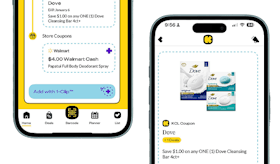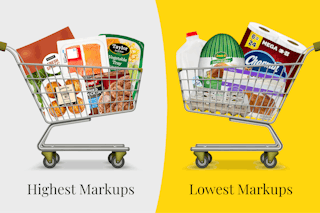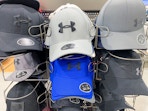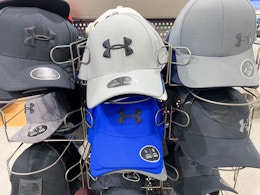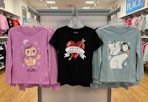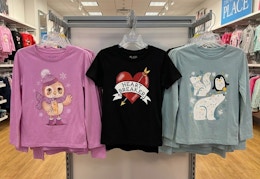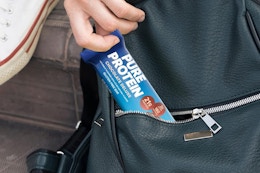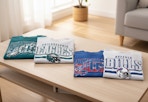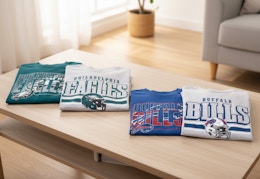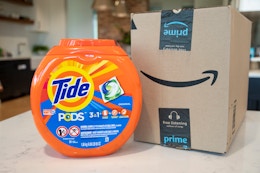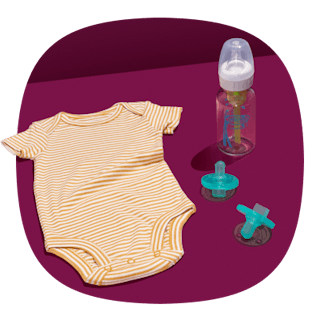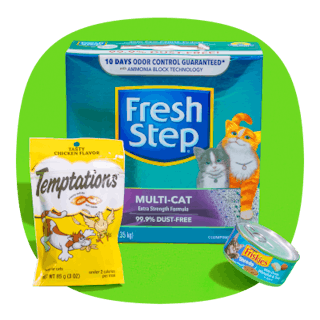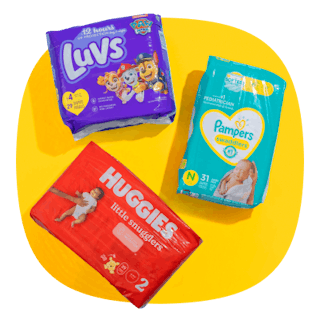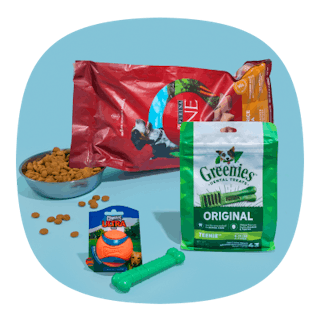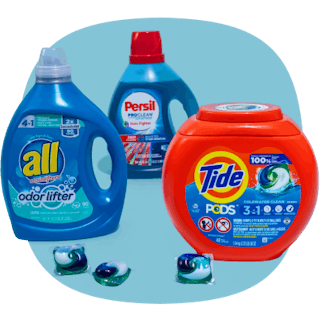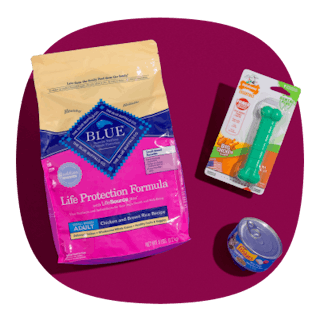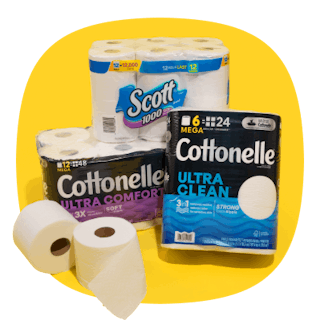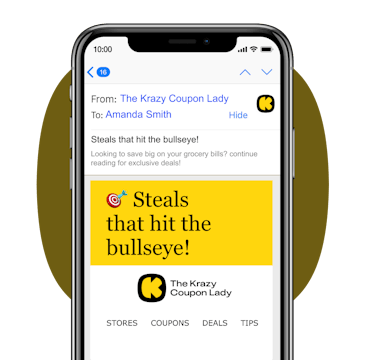Raise your hand if you only see dollar signs inside your fridge as opposed to actual food. Just me? With the high cost of groceries, that gallon of milk shape shifts from a plastic jug of dairy into a sign for $3.69. And that $5.98 my kids devour in minutes? In reality it's two pounds of grapes. It all makes me wonder: what's the grocery store markup on these things, anyway?
Grocery stores traditionally have low profit margins ranging from 1% to 3%. So markups are necessary just to keep the lights on. But what you might assume has the highest markup because it's a necessity, like milk, may actually be a loss leader (something sold below the wholesale cost to attract customers).
I spoke with food retail and agribusiness experts to get some insight into grocery store markups, what makes stores money, and what they lose money on just to get you through the door.
Download The Krazy Coupon Lady app or text HACKS to 57299 for the latest money-saving tips, deals, and coupons.
What's a grocery store markup?
When you walk into a grocery store, the price you see on an item is not what the store paid for it from a wholesale distributor. In most cases, it has a markup price so that the store can actually profit off the item's sale. Markup percentages vary widely throughout the entire grocery store, depending largely on the product's shelf life and demand.
I set out to find definitive markups on the groceries most of us buy regularly. But the answer isn't that cut and dry.
"The inside of the food supply chain is pretty much a black box," says Dr. Ricky Volpe, Ph.D., a professor with the Cal Poly College of Agriculture, Food, and Environmental Sciences. "So it’s impossible to know exactly what wholesale prices are for each grocery store. What we do have is years of industry research and survey data from retailers and grocers to give us an idea of where the higher markups happen."
For example, the markup on produce is believed to be between 50% and 75%, but again, there's a range depending on the exact item and the store where it's being sold. So even offering a price spread is hard to pinpoint.
Now, what's a loss leader?
If I'm going to talk grocery store markups, I also have to mention the items on which groceries don't usually turn a profit. In some cases, they even lose money on the product. These are called loss leaders. A loss leader is an item retailers price low in order to attract customers. Once they've reeled a customer in with that flashy price, the hope is the customer will then spend money on groceries with higher markups within the same shopping trip.
Volpe points to milk as an example of a loss leader. Yes, that same $3.69 gallon I was complaining about earlier.
“Milk is very perishable and bulky, so people can't stock up,” he says. “Plus, it complements so many other products in the store, like cereal, cookies, and coffee. It's the centerpiece of a traditional shopping basket. So it makes a lot of sense as, if not a loss leader, a product retailers don’t mark up much with the hope you’ll buy all of the other things that go with it that do have higher markups.”
Here's where you'll find the highest grocery store markups.
Not surprisingly, convenience comes with a hefty markup, as does the produce department and deli, meat, and seafood counters.
Prepared Foods/Hot Bars/Grab and Go
If you've ever been lured to your grocer's prepared foods section by the smell of fried chicken, you aren't alone. But those prepared pasta salads and grilled, marinated chicken breasts are going to cost you extra.
"Stores account for the skilled labor involved in preparing these options," says Tyler Renaghan, vice president of retail at Upside, a cash-back app aimed at helping users save on groceries and gas. "But they also jump at the opportunity to significantly mark up prices, capitalizing on the convenience these ready-to-eat meals offer busy customers."
Rotisserie chicken is the exception to this high-markup rule.
Without a doubt, the humble rotisserie chicken is the best buy in the prepared foods section of your grocery store. It may not necessarily be a loss leader depending on where you purchase it, but the profit margins are likely very thin.
“Similar to gallons of milk, rotisserie chicken serves as an effective centerpiece for shopping baskets,” Volpe says. “Most people aren't going to buy chicken and eat in their car. They’re going to buy a rotisserie chicken and sides to go with it, like rolls, vegetables, a salad — whatever it may be. So it certainly seems likely they’re playing the loss leader game with rotisserie chicken. Its low price attracts customers, but you need to buy other things to complete the meal.”
Bakery Goods
Located not far from your store's prepared foods is probably the bakery, with everything from cookies and cakes to muffins and pies.
"In-house bakeries are a sweet spot for stores," Renaghan says. "They can produce a wide range of fresh baked goods at a lower cost and sell them at premium prices. Pastries and cakes, in particular, have high margins because their ingredient costs are relatively low."
Prepackaged Fruits and Vegetables
All around, produce has some of the highest markups in the grocery store because of its perishability, but the precut stuff? Forget it.
"Precut and packaged produce like pineapple, melons, and berries often sell at nearly double the cost of whole produce," Renaghan says. "Shoppers love the convenience, and stores capitalize on that by applying a significant markup."
To that point, Volpe says this is an area where retailers are getting really smart about repurposing slow moving inventory towards areas of the supermarket where markups are higher.
“Rather than throwing away produce and specialty crops that are starting to get ugly, they're making party trays, applesauce, smoothies — that sort of thing,” he says. “That's a win-win, because they're preventing lost revenue, food loss, and they're converting it to these higher margin items that consumers have a pretty high demand for.”
Meat and Seafood
As Renaghan points out, it takes skilled butchers and fish mongers to help fill meat and seafood cases, which adds to the markups in these departments. Additionally, if you're purchasing marinated meats, this also allows stores to increase their markups.
Fresh Produce
Here I am talking about fresh fruits and vegetables again, but this time in their whole form. You'll see high markups on everything in the produce section, with the steepest of those falling on anything labeled organic.
Private Label Goods
This is something that surprised me; I've always thought of private label brands (or store brands) as being much cheaper than their name brand counterparts. And they are, but retailers are still marking up the prices on these items.
"The markups are also higher for store brands," Volpe says. "But because the upstream costs related to manufacturing are lower, it's a win for both the retailer and the consumer. In this challenging period of high food prices, store brands are still a smart place for consumers to be looking."
So, yes, that Signature Select marinara sauce from Safeway sitting in your fridge may have cost you less than a jar of Ragu, but Safeway made a larger profit off it than they would have on a name brand.
KCL TIP: Markups are higher on store brands, but their cost to the consumer is still lower than a name brand, making them a smart purchase.
This is where you'll find the lowest grocery store markups.
Not all of these are loss leaders, but the profit margins are thin on these grocery standbys.
Milk and Eggs
I mentioned milk as a loss leader earlier, but eggs are in a similar situation.
"These staples are often sold at little to no profit to draw customers into the store," echoes Renaghan. "The prices are kept low to remain competitive, and their cost can be volatile, impacting margins."
Paper Products
This one really comes as a surprise to me, as I feel like toilet paper and paper towels are so expensive. But Renaghan says these products, along with paper plates, are generally sold at low margins because grocers don’t want to risk alienating price-sensitive customers.
Frozen Turkeys (but only at the holidays)
If you've ever wondered how grocery stores can offer turkeys for $0.49 per pound around Thanksgiving, well, that's strategic ... and a loss leader. It all goes back to the rotisserie chicken example I mention above. While the turkey is the centerpiece of the meal, you're going to fill that table with potatoes, stuffing, veggies, rolls, and more.
"The price behavior of turkey around the holidays flat out violates the law of demand, meaning you're seeing prices at their lowest during periods of peak demand," Volpe says. "But it provides very effective advertising and signaling for consumers. So even if it means losing money on the turkey, you’re winning the war for the store traffic."
So what's the most expensive thing in your fridge after all?
That depends on how you look at it — the extent of the markup or the price you paid for the item. All I know is that $3.69 has now shape shifted back into a gallon of milk knowing it's a loss leader for grocers. And those store brand items are still looking like a pretty good value, even if their markup is high.
And while prepared foods come with a premium price tag, you also have to factor in the time those items are saving you. Because after all, time is money and life is busy. Smart shopping is more than just low prices and coupons (although those are extremely important). It's about shopping for what you need, what you'll use, and what won't go to waste. If your shopping cart can stick to those ideas, you can consider your grocery receipt a win.
Related Reading:
Download the KCL app to add and redeem coupons in store
